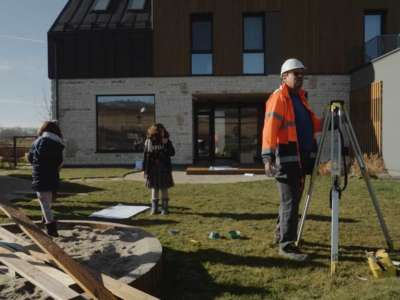The NoTosh approach to strategic planning
If you're being asked to make a strategic plan that’s actually just a multi-year budget with some big words around it, you don't need us.
If you need development plans for the year ahead, your own teams are the best in the world at creating those.
If your instincts are telling you: “We need to do something different and explore beyond our comfort zone”, then we can help. That’s what strategy is.
NoTosh developed its flexible, community-driven strategy process when we realised schools and government bodies needed an alternative to the rigid five year planning cycle, and the top-down nature of “strategic plans" that rarely captured the imaginations of the people who had to make the action happen on the ground.
We have now worked with hundreds of clients on strategy, from award-winning corporate innovation strategy for a firm with 165,000 employees, to scores of the world's top international schools.
While we have a reliable process, our approach helps create distinctive, unique strategy for every organisation, expressed in simple clear language.
Redefine your purpose
Great strategy starts with everyone knowing why you do what you do, and what you want to achieve. So sometimes the strategy process needs to start with the refinement of your core values and mission. Then we can tackle what you want to achieve and your the vision for that.
We know that core values and a strong mission are not found by sitting around a Boardroom table, stroking beards and using one jargon-filled true-ism after another. You find your core values by getting out there, really learning to look, not just see, to listen, not just hear.
A community-informed process: The Design Team
The Leadership Team and Board of a school have responsibility for the strategy, but they need to take their lead from the best data possible. So we listen to the community, through the eyes and ears of a Design Team, made up of your own students, teachers and community members. A diverse team is a must if you want to check each other’s assumptions, so we’ll help you form a Design Team of around twenty people, picked for their own social networks and ability to tap into a broad range of perspectives.
We train them on how to gather human-informed data and stories that fill the gaps left behind by your regular surveys and spreadsheets. And we can follow up with our own deep interviews on key ideas that emerge.
A flexible structure for a focussed set of choices
We will help your leadership team make sense of the data we gather together, by providing you with a long list of choices, derived from the data. Those choices offer different answers to five core questions, inspired by the work of Rotman Professor Roger Martin:
What do you want?
You only need strategy if you're going to do things better or differently. What kind of better or different do you want?
What are you going to do?
What's the big idea (or two) that’s going to take you there?
How are you going to do it?
Is there a specific way you can approach your work, that is unique, sustainable and pertinent to your people?
What are the existing superpowers you can harness from your community?
People? Spaces? Money?
What are your foundational and signature systems?
You've got to make the change sustainable over the long term, even when people come and go.
This isn’t a plan. This is strategy. So we neglect planning in strategic planning? Of course not.
Planning can take all sorts of forms, and most organisations should have some kind of method of planning already. We don’t always need to invent new ways. The aspiration and five interconnecting sets of choices that the Leadership Team and Board make will lead to concrete goals. Those goals can then act as the north star for you teams' planning at different parts of the organisation:
There’s the annual development plan, where everyone creates a departmental plan to solve their own problems. If you’re lucky, people pull together. But most often you have so many departmental plans vying with their own needs that the cost of coordination is too high.
There’s the five year plan, where everyone knows the goals for the years ahead, and the checklist of jobs to be done on the way. If you’re lucky you get two years out of it before it feels irrelevant or simply ‘done’. If you’re really unlucky the Board will change the goalposts when nobody’s looking (this is what happens when new Board members join the party).
You can do sprints. In a series of sprints, where teams know the big idea and the goals they should hit at some point, but have more freedom on how they go about doing it and they work towards a smaller outcome in a shorter period of time. The teams aren’t necessarily departmental, because what they’re working on is for the good of the school, not just their team.
Clearly, it’s the last one that we support schools to implement if they can. Agile sprints, semester pushes, termly goals… you can call it what you want. But little and often, with early successes (and failures you can actually learn from before it’s too late), that is planning that works.
But working out how you’re going to plan, or put an idea into action, is not the same as defining your strategy. And if all you have is agility, without that singular, focussed strategy, you’ve got an organisation full of people running fast in any direction they please.
As Roger Martin puts it:
“If you plan, it's an absolute guarantee of losing. Planning is comforting. It involves budgeting for things that need done, accounting and controlling the costs of doing them. It's all controllable by you, so it's comforting.
“Strategic planning isn't strategy, most of the time. It's a collection of tasks to be done. Strategy isn't the same as planning. Strategy is about defining the outcome, showing what you believe will happen. It can't be proven in advance.
“And you have no control over whether your community will achieve the outcome.
“And that's why doing real strategy creates some angst, too: it might not work. So how do you give yourself less angst by creating a little more certainty? Well, strategy is an integrated set of choices, that depend on each other, that put forward the theory of why you're making one choice over the other. It shows how and why you think you'll achieve the outcome you're seeking. And it helps you define the outcome in the first place.
“It's slow thinking, it's logical. And it gives you time to tweak and refine over time.”
Here’s to slow thinking. Here’s to strategy. Here’s to knowing what you want.



